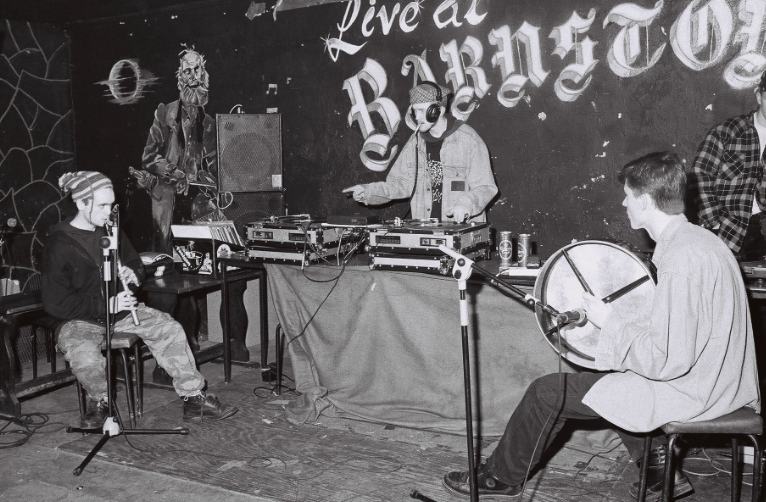Know Your History: The origins of Irish hip hop Vol.1

Know Your History: The origins of Irish hip hop Vol.1
With the success of Gavin Fitzgerald & Mark Hayes’ documentary ‘The Truth about Irish Hip Hop’ which focuses on the current climate of rap music in this country, Mango Dassle takes a look back at the origins and eras that defined Irish hip hop. He explores what built the foundations from which it thrives today.
The beginning of rap music in this country comes from four men who took the heightened Irish political tension of the early 90s and mixed them with chaotic break beats; Trad and Rudeboy Dancehall. Scary Éire are the crew synonymous with the genesis of Irish hip hop, a group way ahead of its time, while speaking on the issues that affected the young dole queue-dwellers of Haughey’s Ireland.
Their beginnings would come from the infamous Barnstormer’s gigs. A back bar venue on Capel Street filled with anyone from Biker Gangs and Ra heads to B-Boys. Support would come from local Dublin crew Ghost’n’Jay or The Marxman posse who were more London-based with members from Bristol and Dublin as well.
Marxman went on to work in the US for Talking Loud records with production from DJ Premier with political and socially conscious raps, as was the style of the time. They incorporated Irish traditional samples with boom bap beats taking influence from crew member Oisín Lunny’s father; Dónal Lunny and had collaborated with Sinéad O’Connor for their single ‘Ship Ahoy’. Although they lacked the wildness of their Scary counter parts. They parted ways in 1995.
Back in Ireland, Scary Éire (made up of RíRá, Mr. Browne, Dada Sloosh and DJ Mek) had the rep of the bad boys in town, it was spliffs and stout to the beat the band.
The hype about their look and sound had drawn record execs to come and see them. With the novelty of House of Pain’s plastic Paddy anthem chiming around the world, the label suits had found themselves the real deal. From Technics to tin whistles on stage and Kalashnikov logos, Scary Éire were everything that Everlast and the boys couldn’t be.
Through a haze of sessions, DMC scratch tournaments and a support slot with U2 on their ZooTV tour, the four men found themselves with a deal on Island Records.
After a record advance spent on buckets of Guinness and all sorts of shenanigans over in London, the crew were eventually dropped by Island, losing all recording rights to the label for 16 years until they could release a compilation album (‘Scary Era’) of Island recordings and other independent label releases in 2007. Though in the meantime Dada Sloosh and Mr. Browne never stayed on the scene, RíRá and DJ Mek took solo careers to an underground success. With Mek becoming known for his remixes of U2 and Ian Brown while RíRá kept busy releasing independent records.
There had been nothing like these groups in Ireland before, and to an extent nothing like them would ever occur again. They were born out of necessity when the only rap album most Irish households would own was Vanilla Ice’s ‘To The Extreme’. As the media barely understood the rave culture taking over the country, a black art form from New York was even more alien.
Ironically it was when Irish people would have had the most in common with the struggles of the hip hop community in the US. Things like Charles Haughey telling us to tighten our belts can only be described as carbon copy Reaganomics, a raging bombing and assassination campaign from paramilitaries and mass immigration with skyrocketing unemployment. The only musicians truly tackling these issues at the time were the MCs and producers, yet their music would be only spread through mixtapes, word of mouth and intensely hairy live shows.
The next generation of hip hop heads in the country were speaking from a country in boom time, with an easier access to the American style of rap that they would inevitably emulate.
The grit and rawness of a DIY scene would remain, but the punk attitude would take a back seat.
With the formative groups and MCs, their existence before the internet has led them to sometimes live only in honourable mentions by those who’ve done their homework, and know their history. Yet what they created by fusing hip hop and Irish culture had longer lasting effects than memorable shows and great songs. They had inspired a younger generation to infuse their Irishness on records and use the template of hip hop to express themselves and the struggles of a more modern era.
A less scary era has arrived, but as important none the less.
Photography: Paul Tarpey
